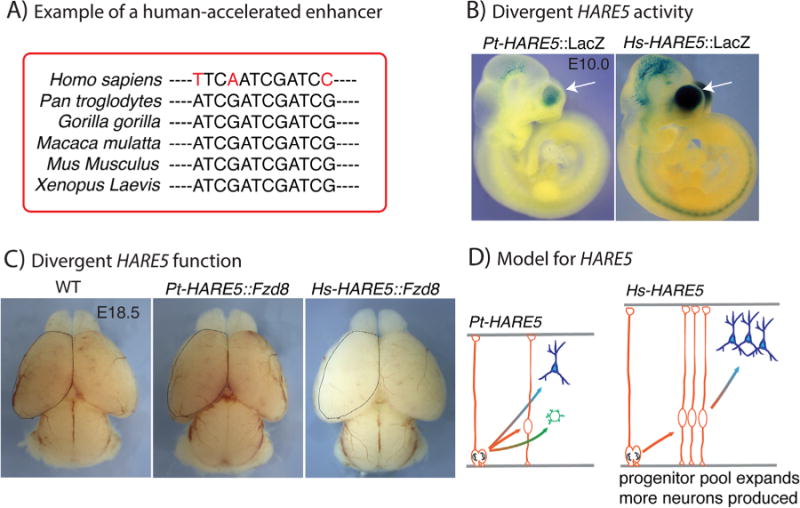Figure 2.

An example of a human-accelerated enhancer influencing corticogenesis. A: A mock example of a human-accelerated locus showing extremely high evolutionary conservation up until the Homo sapiens divergence, when there is rapid accumulation of changes. B: E10.0 mouse transgenic embryos depicting β-galactosidase enhancer activity (blue) driven by either chimpanzee or human HARE5. Hs-HARE5 has stronger enhancer activity in the developing neocortex. C: E18.5 mouse brains from indicated genotypes, with dotted line drawn from WT (control) overlaid on other two genotypes. Hs-HARE5 activation of Fzd8 induces larger embryonic brains with more Foxp1-positive neurons. This phenotype was evident in multiple independent transgenic lines. D: A schematic model for how HARE5 may influence human brain size, by promoting expansion of neural progenitors that eventually leads to production of more neurons and a larger brain. Panel B is reproduced from [59] with permission form Elsevier Publishing.
